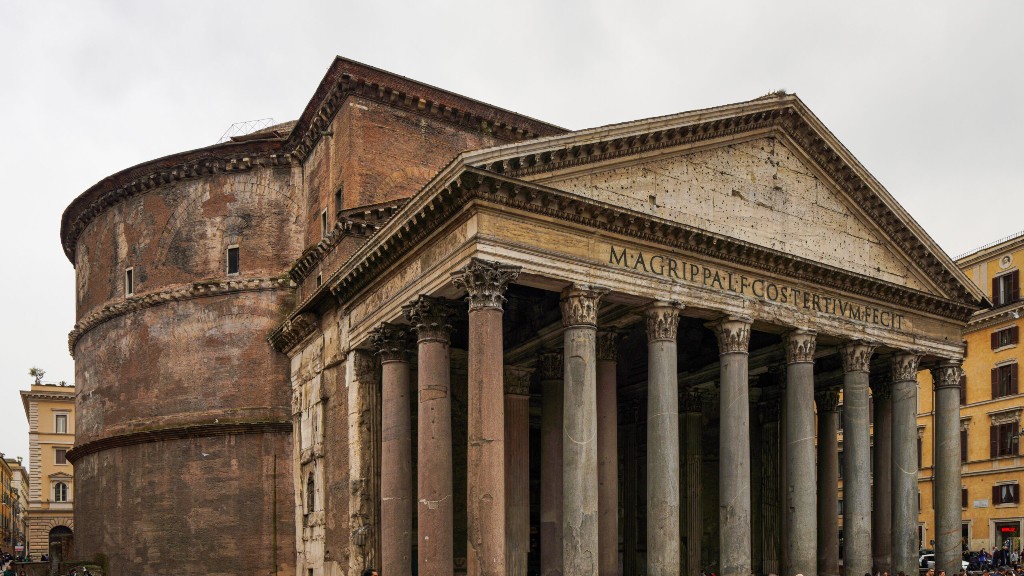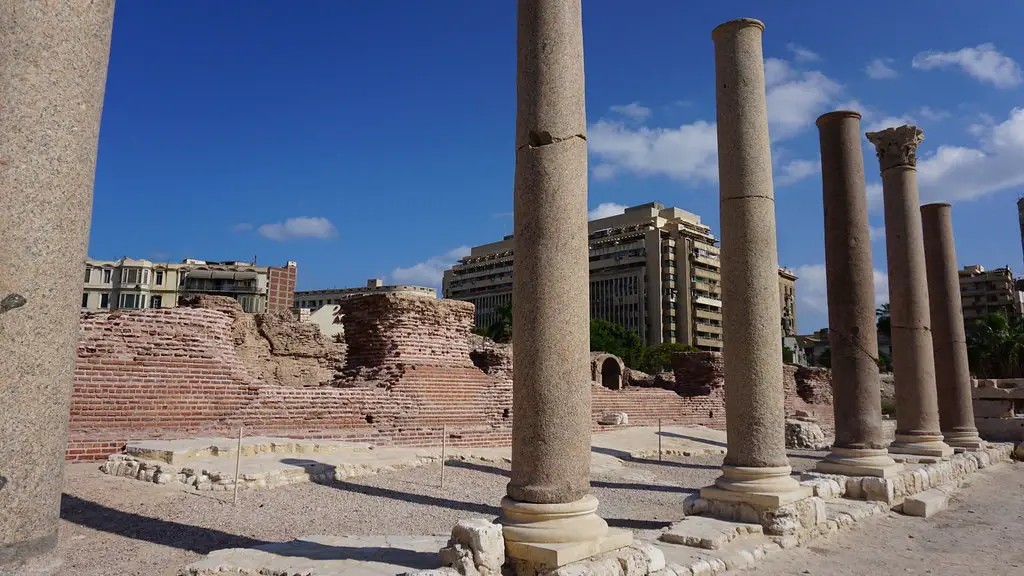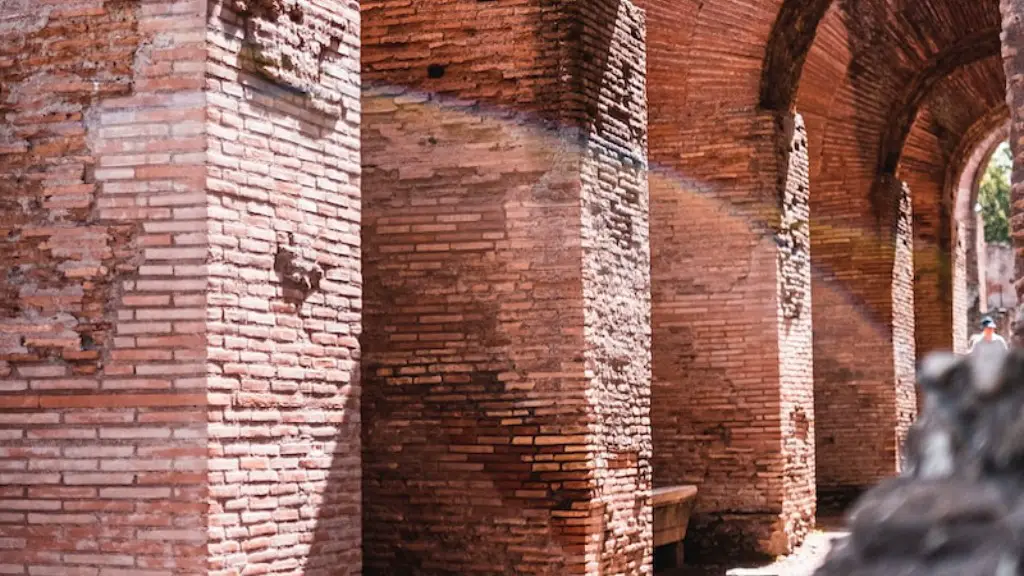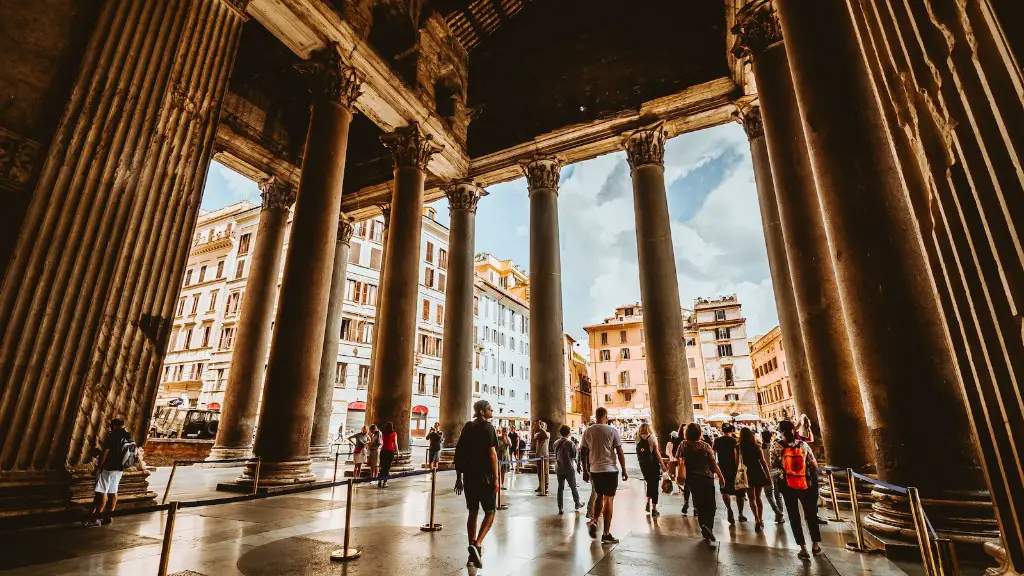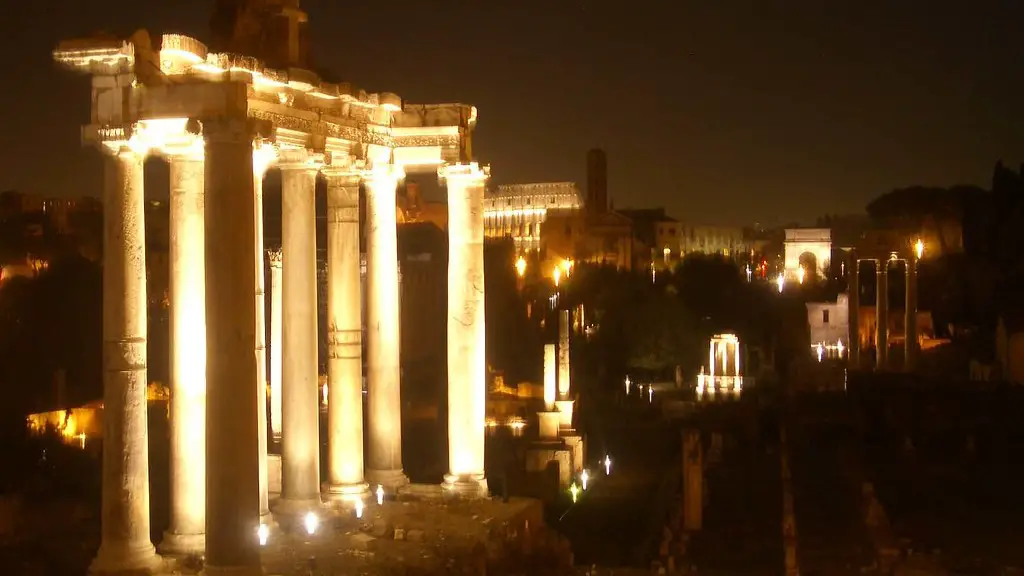The ancient Roman civilization was one of the largest and longest-lasting in recorded history, spanning from the 7th century BC to the 5th century AD. During this time, the Roman people adopted a variety of clothing styles that had an impact on the fashion of the time. Clothing was an important part of daily life in Roman society, both for the wealthy and the poorer citizens. Before diving into what kind of clothes the ancient Romans wore, it is important to understand their background and the fashion trends they embraced.
Although Roman fashion varied over time and was largely influenced by the conquered civilizations they encountered, it was also heavily influenced by traditional Greek clothing. Greek tunics and shirts were common, and many of these were short and made of light linens that were perfect for the hot summer climates of the Roman Empire. To add a bit of flair to the outfit, some Romans would drape the clothing with colorful cloaks or light materials. For those who wanted a more formal look, thick wool cloaks without a hood were typically worn during cooler weather.
When it comes to footwear, Roman shoes were often plain and undecorated. Simple leather sandals and boots were used by the common people, while the wealthy would wear jewelry and brightly colored fabrics in their footwear. This practice was especially popular among the wealthy women, who would often adorn their sandals with intricate jewels on the straps.
In addition to their clothing and footwear, the ancient Romans also made use of jewelry for both men and women. For the men, earrings, arm bands and necklaces were common, often made with gold, silver and brass. Women would often have heavier jewelry pieces due to their more formal fashion style, typically having a larger variety of materials, including pearl and diamond.
In terms of hairstyles, it was common for wealthy men to have long hair, while poorer men kept their hair much shorter. Women typically kept their hair longer as well, usually shoulder length. Many women also had intricate braids and buns, with embellishments such as flowers, ribbons, and jewellery.
The Ancient Romans were also known for their elaborate togas and robes. These were made of thicker fabrics and worn by those in higher classes. They were typically undyed but were often draped with a toga praetexta, a purple toga with an embroidered border. Robes were also common among Roman men, typically made of a light-colored fabric like linen and tied with a belt.
Overall, the fashion in Ancient Rome was varied and intricate. The clothing and accessories they wore were a reflection of their social status, but also a sign of their culture, beliefs and practices. Although the fashion sense of Ancient Rome is not seen today, it has certainly left its mark on the fashion styles of today.
Hairstyles and Jewelry
Hairstyles for men and women in Ancient Rome also played a role in the overall fashion and style. Men of the upper classes would typically have longer hair, and Babylonian curls were also popular. Those from the lower classes kept their hair much shorter, usually not much longer than medium length. On the other hand, women had a greater variety of hairstyles, often wearing long hair down their back or in intricate braids and buns. Adornments such as flowers, ribbons and jewelry were also popular, to bring out their natural beauty.
Jewelry was also popular among both men and women in Ancient Rome. Men often sported simple items like earrings, arm bands, and necklaces made of gold, silver, and brass. Women, on the other hand, had more elaborate pieces due to their more formal fashion sense. These pieces could range from pearls, diamonds, to even more exotic gems. And of course, rings were incredibly common, both as a sign of marriage and as an expensive fashion statement.
The jewelry of Ancient Rome was often a form of status symbol, showing wealth and power, as well as personal style. Since jewelry was a costly and desired item, the wealthy often displayed it as a sign of their power and wealth. For the poorer classes, the wearing of jewelry was still popular, and the pieces were crafted with the same care, although their materials were much more basic.
Men’s Clothing
Ancient Roman men wore a variety of clothing styles depending on their social status and occupation. Common citizens would often wear simple clothing, consisting of light linen tunics and wool cloaks for during colder months, as well as sandals and boots for footwear. On the other hand, wealthier men could often be seen wearing more complex clothing, often made from finer fabrics with intricate draping and brocade designs.
Long robes and togas were also a prominent clothing style for those in the upper classes. These were usually single-piece garments made from heavy wool or linen, and were often decorated with elaborate stitching, pleats, and colorful dyes. Depending on the occasion, members of the upper classes could be seen wearing a variety of different robes, including the toga praetexta as mentioned earlier. It is also worth mentioning that men were not the only ones wearing togas – wealthy women often wore togas as well, albeit in brighter colors.
Women’s Clothing
Similar to their male counterparts, Roman women’s fashion was largely influenced by the wealthy and the upper classes. The overall styles were much the same as those seen in men’s fashion, although the colors and fabrics used would often be brighter, with more intricate stitching and draping. Women would typically wear light linen tunics and robes, with intricate jewelry and precious stones to add a bit of flair to the outfit.
In addition, female fashion in Ancient Rome also included veils, which were often draped around the body or head to protect from sun exposure. The wealthy would often have jewels affixed to their veils, as well as intricate embroidery and dyes. These veils were seen as a sign of modesty and propriety, and were popular amongst those in high society.
Footwear
In terms of footwear, the common people of Ancient Rome wore simple leather sandals and boots. Wealthier citizens would make use of finer shoes and boots, often ornamented with gold and colorful fabrics. Women were especially fond of embellishing their footwear with jewelry, adding an air of royalty to their look.
For everyday life, Romans often wore low-heeled sandals, which were mainly made of leather and had straps lined with metal. This was ideal for the hot Roman climate, although some wealthy citizens would opt for shoes with higher heels for more formal occasions. The boots worn by Romans were also fairly simple in design, often being made from a single piece of leather and laced up the front.
Accessories
Apart from clothing and footwear, the fashion of Ancient Rome also included a variety of accessories. Wealthy women often sported intricate jewelry, such as necklaces, rings, earrings and bracelets. Shawls and cloaks were also commonly worn, draping around the body to provide additional protection from the elements. These could be made from heavier fabrics, such as wool, or lighter materials, like linen. Caps and hats were also popular among both men and women, and could be made from silk or even animal fur, depending on the occasion.
Overall, the clothing of Ancient Rome was influenced by a variety of different styles and cultures. Clothing was often reflective of one’s social status, however all classes could be seen wearing colorful and elegant garments, often in the same style. From tunics and togas to sandals and jewelry, the fashion of Ancient Rome is still relevant today, both in terms of style and in terms of the history that it represents.
